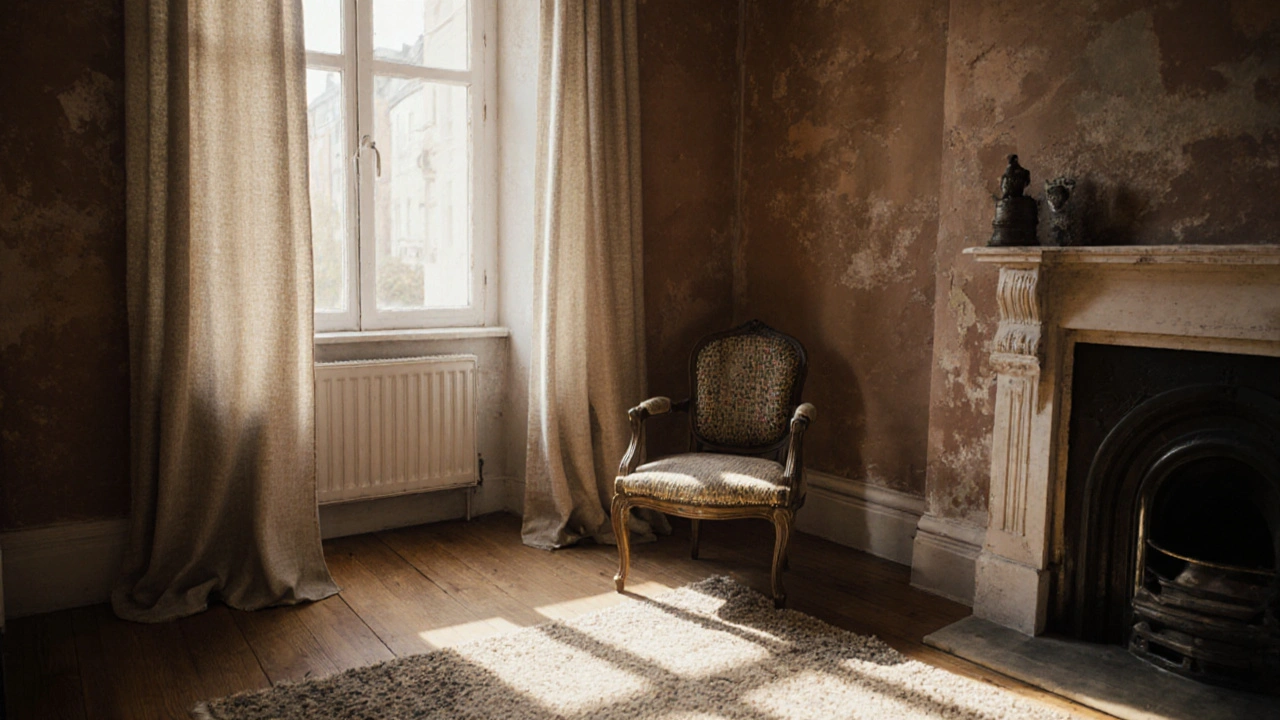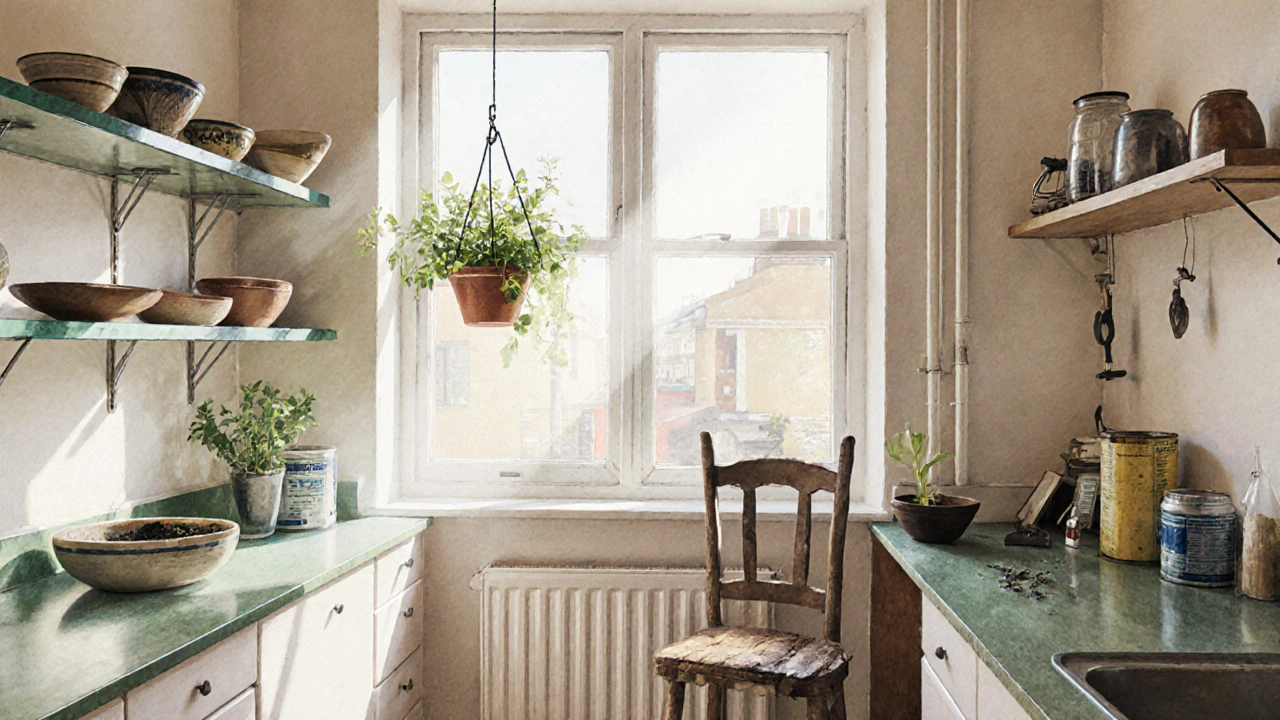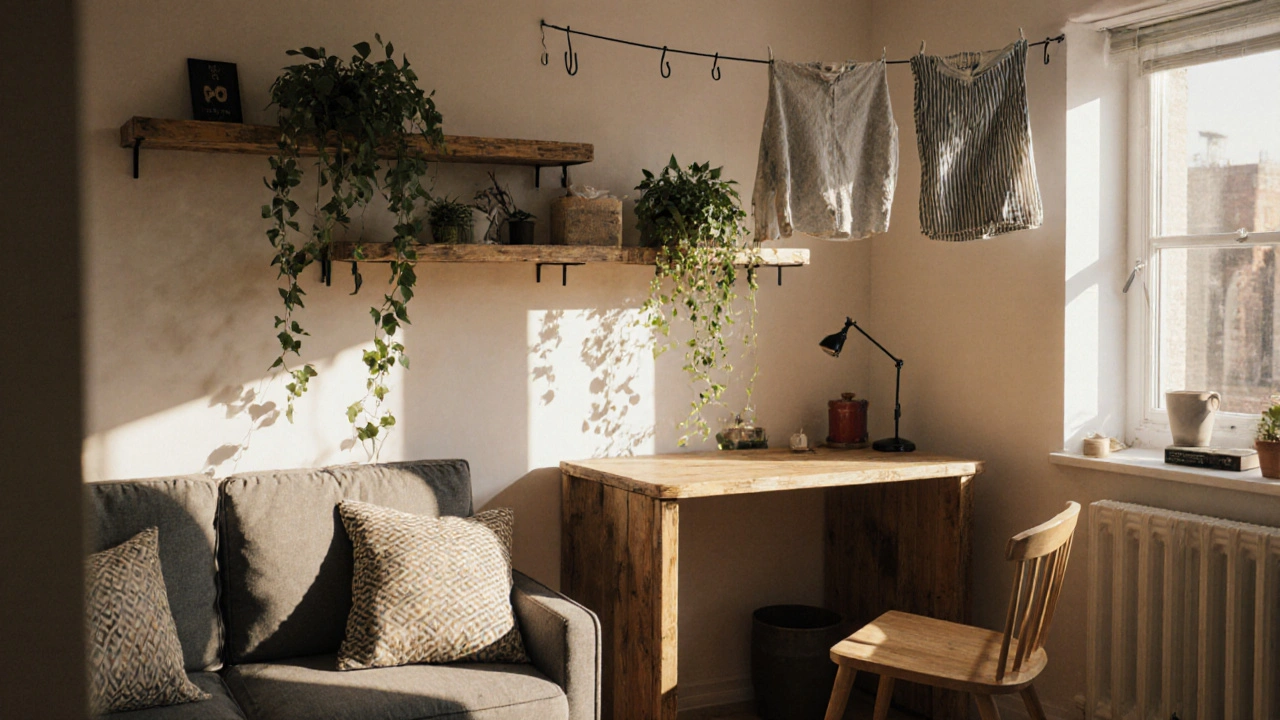
When you walk into a London flat built in the 1920s and feel the warmth of reclaimed oak floors underfoot, smell the faint hint of beeswax polish, and notice how sunlight dances across a handmade linen curtain - you’re not just seeing a pretty room. You’re experiencing the quiet revolution in home design that’s reshaping how Londoners live. Sustainable interior design isn’t about buying a few plants or hanging up a bamboo shade. It’s a complete rethink of what materials go into your walls, where your furniture comes from, and how your home breathes with the city around it.
Why London Needs Sustainable Interiors Now
London’s housing stock is old. Over 40% of homes were built before 1945, and many still rely on single-glazed windows, outdated insulation, and toxic finishes. The UK government’s 2030 net-zero target isn’t just about power plants - it’s about the air you breathe indoors. A 2024 study by the Greater London Authority found that homes using conventional paints, carpets, and particleboard released 37% more indoor pollutants than those using certified sustainable materials. That’s not just bad for the planet - it’s bad for your lungs, your sleep, and your kids’ focus at school.
And it’s not just about health. Rising energy bills are forcing Londoners to look at their homes differently. A well-insulated home with passive solar design can cut heating costs by up to 40%. That’s £800 a year saved for a typical three-bedroom flat in Southwark or Islington. Sustainability isn’t a luxury here - it’s a practical response to cost, climate, and comfort.
Where to Start: The Five Non-Negotiables
You don’t need to gut your whole flat to make it sustainable. Start with these five fixes that deliver real results:
- Swap out VOC-heavy paints - Most standard paints release volatile organic compounds for months after drying. Look for labels like Low-VOC or Zero-VOC from brands like Auro, Earthborn, or Benjamin Moore’s Natura line. These paints use natural pigments and plant-based binders. In a 2023 test by the London Environmental Health Network, homes using Zero-VOC paint saw a 92% drop in airborne toxins within 72 hours.
- Choose reclaimed or FSC-certified wood - Don’t buy new oak flooring from a warehouse in China. Look for reclaimed timber from demolished Victorian terraces or FSC-certified sources. Companies like Timberwise in Hackney and Reclaim London in Peckham source wood from old barns, railway sleepers, and even Thames riverfront piers. Each plank has history - and zero new deforestation.
- Use natural fibers for textiles - Cotton, wool, linen, and hemp are breathable, biodegradable, and free from synthetic dyes. Avoid polyester curtains or acrylic rugs - they shed microplastics every time you vacuum. A single wool rug from Woolly in Camden lasts 20+ years and can be composted at the end of its life.
- Repair, don’t replace - That wobbly chair? Fix it. The chipped ceramic sink? Refinish it. London’s repair culture is booming. Places like Fixit Club in Brixton offer free workshops on mending furniture, sewing curtains, and restoring old taps. A repaired item saves 80% of the carbon footprint of buying new.
- Go LED, go smart - Switch every bulb to LED. They use 85% less energy than incandescents. Add smart plugs to turn off phantom loads - your TV, charger, and coffee machine don’t need to sip power all night. A 2025 survey by Energy Saving Trust showed London households using smart controls saved an average of £120 annually on electricity.
Materials That Actually Make a Difference
Not all ‘green’ labels are equal. Here’s what works - and what’s just marketing:
- Clay plaster - Used in 19th-century London homes, clay plaster regulates humidity naturally. It absorbs excess moisture in winter and releases it in summer, reducing the need for dehumidifiers. Brands like Clayworks London offer it in 30 natural shades - no chemicals, no smell.
- Recycled glass countertops - Made from post-consumer bottles and jars, these surfaces are durable, heat-resistant, and stunning. Companies like Vetrazzo and Ecoglass UK create unique patterns that look like marble but cost 30% less.
- Cork flooring - Harvested from the bark of cork oaks (which regenerate every 9 years), cork is warm underfoot, naturally antimicrobial, and great for sound insulation. It’s perfect for London flats where noise from neighbors is a constant issue.
- Recycled metal fixtures - Tap handles, hinges, and light fittings made from recycled brass or aluminum are just as strong as new ones. Look for suppliers like London Brass Co. who melt down old plumbing fixtures from demolition sites.
- Biodegradable insulation - Forget fiberglass. Wool insulation from sheep in the Cotswolds, hempcrete (a mix of hemp fibers and lime), and cellulose (recycled newspaper) are all effective and non-toxic. Hempcrete even sequesters carbon as it cures.

Designing for Small Spaces - London’s Hidden Advantage
Most London homes are compact. That’s not a problem - it’s an opportunity. Small spaces force you to be intentional. Multi-functional furniture isn’t trendy - it’s necessary.
Think: a sofa that lifts to reveal storage for winter coats, a fold-down desk made from reclaimed pine that tucks under the window, or a dining table that expands with leaf inserts from an old church pew. In a 2024 survey of 200 East London flats, 78% of residents who used modular, multi-use furniture reported feeling less cluttered and more relaxed.
Vertical space matters too. Wall-mounted shelves made from reclaimed wood, hanging planters with native British species like ivy or lavender, and ceiling hooks for drying laundry reduce floor clutter and improve air flow. In a city with limited outdoor space, bringing nature inside - even in small doses - lowers stress and improves focus.
Local Sourcing: The Real Sustainability Hack
Buying something labeled ‘eco-friendly’ that shipped from Vietnam adds more carbon than the item saves. That’s why the most powerful move you can make is to buy local.
London has over 120 independent makers who specialize in sustainable interiors:
- Studio 22 in Peckham makes cushions from deadstock fabric scraps
- London Clay Studio in Walthamstow hand-throws ceramic bowls from local clay
- Greenlight Interiors in Shoreditch refurbishes mid-century furniture using only natural oils
- Urban Harvest in Brixton turns food waste into bioplastic light shades
Shopping locally cuts transport emissions, supports small businesses, and gives your home a unique story. You’re not just buying a lamp - you’re buying the craftsmanship of someone who lives two miles away.

What Doesn’t Work - And Why
Not everything called ‘sustainable’ is. Watch out for:
- ‘Biodegradable’ plastic - These need industrial composting facilities to break down. In London’s home bins, they just sit there for decades.
- Mass-produced ‘eco’ furniture - If it’s sold on Amazon or Wayfair under a green label, it’s likely greenwashed. Check for certifications: FSC, Cradle to Cradle, or B Corp.
- Indoor plants as air purifiers - NASA’s 1989 study on plants cleaning air was done in sealed labs. In a real London flat, you’d need 1,000 plants to make a difference. Stick to plants for joy - not air quality.
- Over-relying on solar panels - Rooftop solar isn’t feasible for most flats. Focus on what you can control: lighting, insulation, and materials.
Real London Homes, Real Results
In a Bermondsey flat built in 1912, a couple replaced their oil-based varnish floors with reclaimed oak, installed clay plaster walls, and swapped their synthetic rug for a wool one from a Camden weaver. Within six months, their asthma symptoms dropped. Their energy bill fell by £1,100 a year. And their guests keep asking where they got the furniture.
In a one-bedroom in Camden, a single parent used second-hand cabinets, painted walls with earth pigments, and added a hanging herb garden by the kitchen window. She didn’t spend £10,000. She spent £800 - and now her son sleeps better.
Sustainable design in London isn’t about perfection. It’s about progress. One reclaimed door at a time. One low-VOC brushstroke. One repaired chair. You don’t need to do it all. Just start.
Is sustainable interior design more expensive in London?
Not necessarily. While some eco-materials cost more upfront, many sustainable choices save money long-term. Reclaimed wood often costs less than new hardwood. Low-VOC paint lasts longer and doesn’t require ventilation during drying. Repairing furniture avoids replacement costs. A 2025 survey found that 68% of Londoners who switched to sustainable interiors saw their overall spending on home upgrades drop within two years.
Can I do sustainable design in a rented flat?
Absolutely. You don’t need to tear down walls. Swap out light fixtures with plug-in LEDs. Use removable wallpaper made from recycled paper. Hang curtains from tension rods. Buy second-hand rugs and furniture. Add plants in pots. These changes are reversible, landlord-friendly, and still cut toxins and energy use.
Where can I buy sustainable materials in London?
Start with local markets like Broadway Market in Hackney, Spitalfields Market, and the Repair Café pop-ups in Lewisham. Independent shops like Reclaim London, Timberwise, and Clayworks London offer certified materials. Online, check Ecobuy and Green Home - both UK-based with transparent sourcing.
What certifications should I look for?
For wood: FSC (Forest Stewardship Council). For paint: Green Seal, EcoLogo, or Cradle to Cradle Certified. For textiles: GOTS (Global Organic Textile Standard). For insulation: BRE Green Guide rating A or B. Avoid vague terms like ‘natural’ or ‘eco’ - demand proof.
How do I dispose of old furniture sustainably?
Don’t put it in the bin. Donate to charities like The British Heart Foundation or Furniture Reuse Network. Use apps like Freecycle or Olio to give it away. If it’s broken, take it to a repair shop or a local recycling center like London’s Household Waste Recycling Sites. Many accept wood, metal, and fabric for reuse or composting.
London’s homes are more than structures - they’re part of a living city. Choosing sustainable materials isn’t a trend. It’s a quiet act of care - for your health, your wallet, and the neighborhoods you live in. Start small. Stay consistent. Your home will thank you.